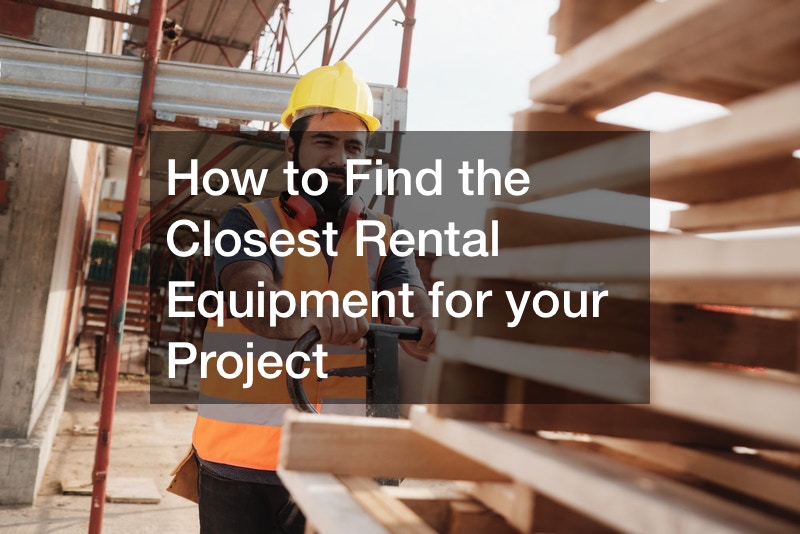
If you are considering a move and want to know what to do before, during, and after settling, you can create a detailed list of everything you need. Whether a new bed frame or washer and dryer, list the things you no longer need. You can also list your favorite places to visit and communicate with your loved ones to let everyone know to where you are relocating.
Check your checklist for moving into another home. This will help you prepare by doing a home inventory and give you a better idea of what you might be looking for. It can also be a good idea to start mapping out your new home to know where everything will go and what you will need to bring with you.
While you can do a few things to make a move easier, the most important thing is working with a relocation company specializing in helping people with the process. A good company will work with you to set up a detailed moving plan, hire a company that will pack and unpack your belongings, and is on hand to take care of any last-minute issues that may come up during the move.
Ask For Help If You Need It

You can choose the type of packing that works best for you and leave other details to the professionals. Ask your moving company which services they offer and how much they typically cost. With the checklist for moving into another home, you can get someone to pack your belongings if you cannot do so. This will allow you to focus on getting things packed and get them to their destination without worrying about loading and unloading.
If you need to hire a moving company, do your research first and find a company you feel comfortable with. Consider seeking the advice of a relocation expert if you are considering hiring a company to pack up your belongings. These experts can advise which items to pack and which to leave. It also points you in the right direction if you need to ask for advice on what to do next once you get to your new home.
Be sure to let the movers know if you need any help with anything. For example, if you have young children, be sure to let the movers know to be careful with the kids’ toys, and that they may be emotional during the process. Make sure to let the movers know if you have any specific requests, such as how you would like certain items and furniture packed.
Ask for help if you need it, but be sure to let the professionals do their job. If you need to visit a doctor, hospital, or another place where you do not have access to your items, have a friend or family member pack your things for you.
Let Go of Your Old Living Space
While it might seem like a simple process to declutter your home or apartment, it’s not as easy as it sounds. After all, you’re potentially removing things that have significant sentimental value. Moreover, you might be downsizing, which means that you’ll likely be reducing the number of belongings as well. A checklist for moving into another home comes in handy.
You can hire a contractor to tackle the job. Regardless of the solution you choose, ensure that the contractor has a good reputation and has completed other similar projects. If you’re downsizing, be sure to clear out all of the boxes, so you don’t end up keeping something you meant to throw away. It’s also good to clear out storage spaces, such as basements or closets. Being able to clear out space is usually a good and energizing thing, so don’t think about it as a nuisnace that needs to be done.
If you are downsizing, be sure to consider how your new space will fit into your overall decor and style. Many people who are relocating decide to downsize because they have less of a need for that much space anymore, but they often part with old possessions in the process. It can be helpful to collect souvenirs from your old locale before the move and put them in storage until you are ready to display them again.
This can help you rediscover your favorite pieces and make room for new things. After you have relocated, take some time to examine your old home and determine which items you need to sell or get rid of in order to make way for new home improvements or decor. Taking care of this early can allow you to get rid of these items and make way for a fresh start.
While it may seem like a daunting task to let go of your home, it’s not always as difficult as you might think. After all, most of the things you own are material objects. When you finally make the decision to let go, don’t just start looking around your house and property. Instead, explore your options and find out what might work best for you. You can still live in your home while making it your new office, family room, or playroom. In fact, you might even be able to use the same space for both work and play! If you decide that a different location is best for you, don’t just pick something random.
Have Your Pipes Inspected

If you’re moving into a house, you may want your pipes inspected. You may be able to do this yourself by turning off the water and flushing out the lines. A plumber or a local utility company can help. You can also have the plumbing inspected by a contractor if you’re in a position to hire one. Ensure it’s on the checklist for moving into another home.
Some pipes may need to be replaced, and others may need to be cleaned out. It’s essential to have an inspector look at the pipes to ensure no problems. If there are any issues, the plumber will be able to fix them before you move in. You also don’t want to find out later that you had to cancel your move because the pipes are frozen or leaky. After all, you didn’t know you had a problem until it was too late. Make sure to have any repairs done before you move in. You may hire drain cleaners and plumbing services.
Even if you don’t have a gas line directly connected to your furnace, you should still have your plumbing inspected. You can prevent a lot of problems by ensuring that your faucet is not restricting the flow of water or freezing up. Your plumber will be inspecting your pipes for signs of wear and tear and checking for cold spots. He will also make sure that your water heater does not pose a risk and give you an assessment of the security in your new home.
Schedule or Fix any Necessary Repairs
You can visit a home inspection company or hire one to do the work for you. A pre-inspection will help you plan for any issues that might crop up, but a detailed report will also give you the numbers to rule out any major problems before they happen.
If you’re buying a new home and haven’t had one done before, ask the inspector to include a ‘redo’ report. This will give you detailed information on any repairs that need to be done and the estimated cost.
Take pictures of all the critical areas of the home like the floors, walls, windows, and any electrical systems, and ensure any features like stairways and attics that might need some attention. In addition to the inspection, the report should also include a detailed list of any maintenance problems and needed repairs. Verify your checklist for moving into another home.
Be sure to get a detailed report that lists the conditions of each major component of your home and the state of any minor details. You’ll be better prepared if you know what to look for and what to do if you find a problem. Your inspector may point out issues like water heater repair services that need to be made.
Schedule Renovations and Upgrades

You may want to schedule routine maintenance or upgrade projects to keep your property within its intended functional limits. When working with an electrician, ensure your checklist for moving into another home guides you. Renovations or upgrades that require access to the outdoors usually require permits from the local authorities. For example, installing a climbing structure in a park can require permits from the local authorities.
Similarly, installing a deck in your backyard or building a shed in your yard may require permits. In residential cases, the installation of a professional deck may be exempt from permits or restrictions. For example, if the deck is installed to improve fire safety or aesthetics, it will be exempt from permits. When you schedule maintenance or an upgrade, ask the contractor to include a thorough scope of the work. This will allow you to track the project from start to finish and know exactly what will be done, when it will be done, and at what cost.
Ask the contractor for an estimate that includes the cost of any estimated savings from the maintenance or upgrades, as well as the cost of beginning the maintenance or upgrade work and how much it will cost to complete it. To get the most out of your property, you need to schedule regular maintenance and upgrades. This could be a routine inspection, a new roof, or a complete kitchen and bath remodel. After you’ve chosen the right company to handle your maintenance needs, make sure to keep track of their progress and follow-through.
Consider Fortifying Your Home
Home is a safe place to relax, chill out, and decompress. If you are trying to increase the value of your home, you should make sure it is as safe and secure as possible. You should also make sure it is as energy efficient as possible. Always check your checklist for moving into another home.
You can install a ground-fault circuit interlock device on your property’s electrical system or install a smoke detector on every level of your home. You can also try to make your home as energy efficient as possible by following energy efficiency tips and installing solar panels on your home. Let a professional conduct generator inspections.
Designate Areas for Work, Play, and Leisure

People need space to relax and decompress, read a book, or take a walk. They need areas that are conducive to creativity and productivity. It goes beyond choosing a wallpaper color and choosing a furniture style. And it is about wanting the right environment for the right person. Reflect on the checklist for moving into another home.
Next, designate a play space for kids where they can run and play without being stressed out about getting in trouble. Finally, designate a relaxing space for yourself where you can escape from the day’s stressors. Setting boundaries is essential for everyone’s well-being. Ensure that everyone in your home knows each other’s boundaries. If a boundary is violated, it’s essential to address the issue right away, to see you living a more calm and stress-free life.
Planning and designing a workplace or office space that works for employees, visitors, and customers is essential to a healthy workplace. Creating a controlled, safe environment where people feel welcome and safe to be themselves is an important part of that process. To help people feel at home in their work environment, it’s a good idea to set aside designated areas for activities like reading, visiting with colleagues, or taking breaks.
Similarly, setting up common areas where people can come together and relax can help create a more comfortable work environment. An easy way to do this is by using color in your design, such as using natural woods, soft palate, or pastels.
Invest Your Time and Money
If you are serious about financial success, you need to start paying attention to your spending and personal financing. On the checklist for moving into another home, you can do a lot to cut expenses, like eating out less or saving up for that big purchase. Ensure you put money into the right areas of your life, like your retirement account. Make sure you are actively investing your money, and you will likely see better returns over time.
By investing in the stocks or the assets, with a bit of effort, you can make a significant amount of money if you strategize. You can do this by monitoring your investments or doing it with a broker. Some apps track your investments and make the management of your money easy. Ensure you diversify your assets to protect your wealth. Invest wisely, and you’ll enjoy a better financial future. Invest in things you’re passionate and confident about, and which give you purpose.
Consolidate Your Belongings

Keep your belongings in one place such as a storage unit. This aids in removing clutter, making your storage unit look nice and neat. Keep your valuables in a safe place. You might need to collect your personal belongings including your ID, credit card, and driving license. If you have any essential documents stored in private places, like in a safety deposit box, get the private key to that safe.
You probably have things scattered around your house, garage storage, or office that you never use. Consider starting with your bedroom. By organizing your clothes and reducing the number of items in your closet, the checklist for moving into another home will help you stay focused on your goals and make it easier to buy less expensive items.




